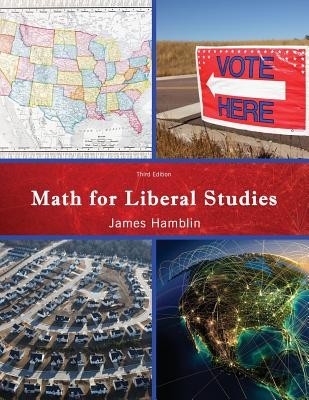
- We will send in 10–14 business days.
- Author: Hamblin
- Publisher: Kendall/Hunt Publishing Company
- ISBN-10: 146524476X
- ISBN-13: 9781465244765
- Format: 21.6 x 27.4 x 1.6 cm, softcover
- Language: English
- SAVE -10% with code: EXTRA
Reviews
Description
Suppose you need to deliver packages to several locations in a town; how do you decide the most "efficient" way to do it? Suppose you want to find an alternative way to find the winner of an election; how do you decide what makes an election "fair"? Suppose you want to disguise a private message so that only certain people can read it; how do you decide the "best" way to do it? Math for Liberal Studies is a textbook for a liberal arts mathematics course. Similar to the common "physics for poets" class, this course is designed for students who do not need to take more technical math classes. Although students are not required to use algebra or statistics, each section is tied to an interesting real-world application. Students learn that mathematics is not always about getting one right answer. Instead, there may be several answers and different ways to decide which answer is optimal. The book is divided into three major (i) the mathematics of efficiency and making business decisions, (ii) the mathematics behind voting and fair division, and (iii) the mathematics of codes and cryptography. Each section has several exercises where students can apply what they have learned. In addition, there are online practice exercises for at least half of the sections, as well as PowerPoint lectures for every section.
EXTRA 10 % discount with code: EXTRA
The promotion ends in 19d.10:04:13
The discount code is valid when purchasing from 10 €. Discounts do not stack.
- Author: Hamblin
- Publisher: Kendall/Hunt Publishing Company
- ISBN-10: 146524476X
- ISBN-13: 9781465244765
- Format: 21.6 x 27.4 x 1.6 cm, softcover
- Language: English English
Suppose you need to deliver packages to several locations in a town; how do you decide the most "efficient" way to do it? Suppose you want to find an alternative way to find the winner of an election; how do you decide what makes an election "fair"? Suppose you want to disguise a private message so that only certain people can read it; how do you decide the "best" way to do it? Math for Liberal Studies is a textbook for a liberal arts mathematics course. Similar to the common "physics for poets" class, this course is designed for students who do not need to take more technical math classes. Although students are not required to use algebra or statistics, each section is tied to an interesting real-world application. Students learn that mathematics is not always about getting one right answer. Instead, there may be several answers and different ways to decide which answer is optimal. The book is divided into three major (i) the mathematics of efficiency and making business decisions, (ii) the mathematics behind voting and fair division, and (iii) the mathematics of codes and cryptography. Each section has several exercises where students can apply what they have learned. In addition, there are online practice exercises for at least half of the sections, as well as PowerPoint lectures for every section.


Reviews